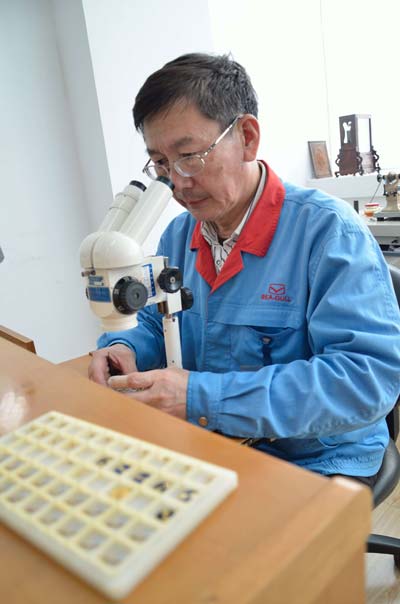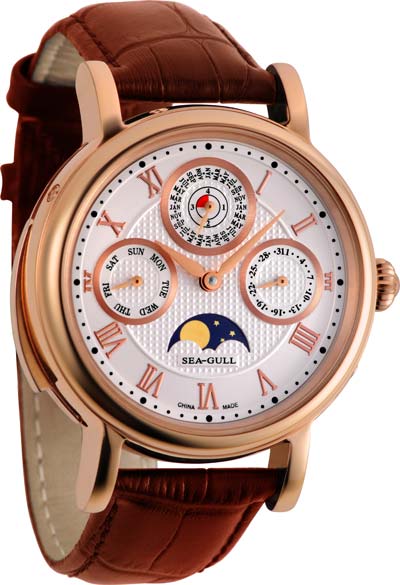Time machine
 |
|
Yang Zuobin adjusts watch movements in Sea-Gull's workshop. Photo provided to China Daily |
 |
|
The first watch on the Chinese mainland that combines a tourbillon, minute repeater and calendar was sold for 1.28 million yuan in 2011. Photo provided to China Daily |
The nation's master watch and clock makers have emerged from a difficult decade to make the most of the luxury market. Wang Kaihao reports in Tianjin.
Staring at the microscope and testing tiny details - Yang Zuobin, 63, devotes his mind to the miniature world of mechanical watch movements.
|
|||
He was honored as one of 12 "Chinese Watch and Clock Masters" selected by the Chinese Horologe Association in June, and has the title "chief technician" at work.
"I am only a worker, not an engineer," he says, humbly. "I didn't make them, but assembled them."
In 2011, he assembled the first watch on the Chinese mainland that combines three major symbols of a high-end mechanical watch: tourbillon, minute repeater and calendar.
An anonymous businessman from Xiamen, Fujian province, bought it for 1.28 million yuan ($201,000), the most expensive domestic watch ever sold. It is a complex and small machine containing 435 components.
"Putting these components together takes days, but I have to spend months adjusting the movements and erasing errors."
Yang began assembling watch movements in 2004, when he was supposed to retire.
He had planned to open a repair store in a supermarket after retirement, but his stall was cancelled right before he moved in.
"When I was at a loss thinking about what I would do in the future, the managers asked me to return to the factory and assemble watch movements."
Sea-Gull began producing its high-end movements in 2002. However, it lacked skillful assemblers.
"Even the tourbillon is not that puzzling," Yang says, referring to one of the most complicated elements in luxury watches. "Though I had never seen it before, I soon understand its structure."
"Maybe that's because I've been dealing with machines for a long time. No matter how complex a watch is, it is a machine."
He entered the factory in 1970 after studying machinery for five years in a technical school, and worked for eight years on a lathe, until he transferred to be a machine repairer for 15 years.
"I try to love whatever I do. I have strong vanity because I always want to be top at whatever work I do."
Yang accidentally came into possession of a textbook on how to repair watches from an abandoned library during the "cultural revolution" (1966-76).
He began to tinker with watches in his spare time for relatives.




















